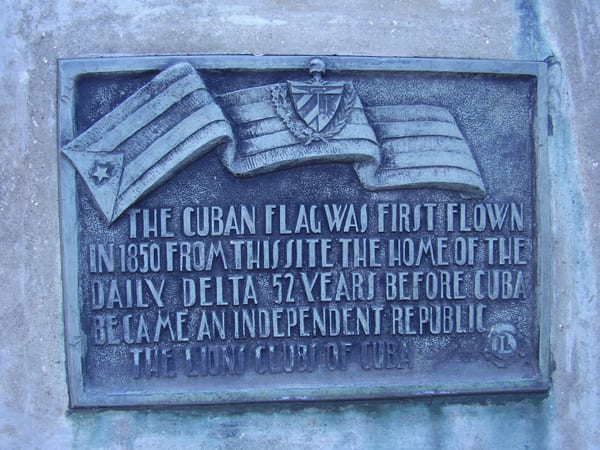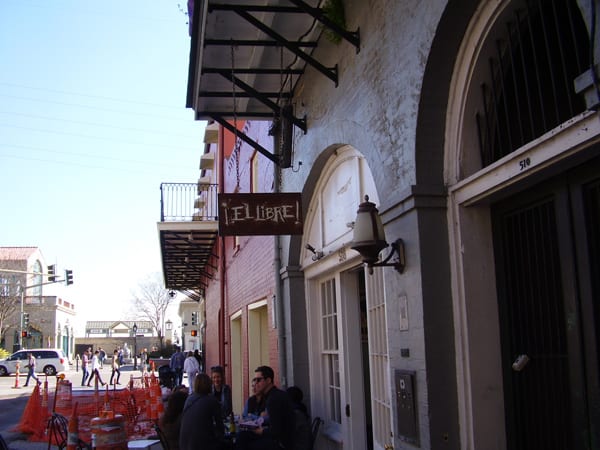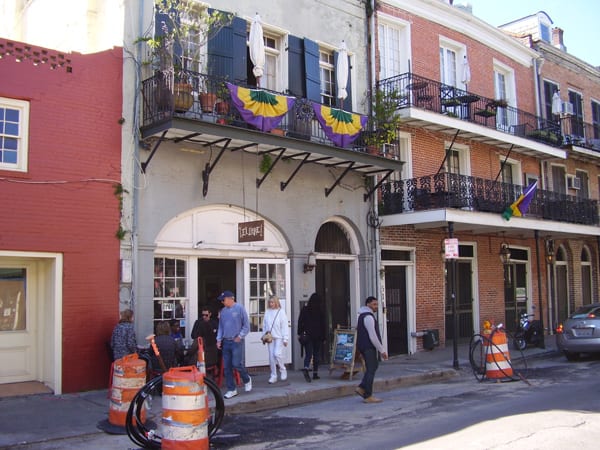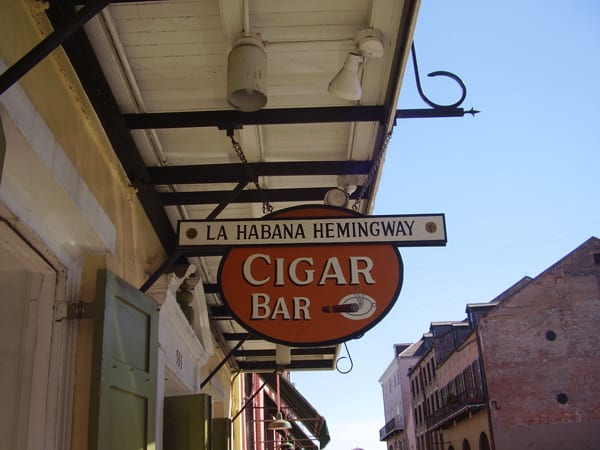Sister Cities: Havana and New Orleans
By Aaron J. Jordan*
 HAVANA TIMES — As a citizen of the United States and a resident of metropolitan New Orleans, Louisiana, I am excited about the easement of restrictions and the thawing of relations between the U.S. and Cuba, two estranged neighbors. New Orleans has several Cuban restaurants and many Havana-styled cigar bars, as both cities are sister-cities in that they share busy seaports, grow sugarcane, have humid weather, endure mosquitos, and are regularly threatened by hurricanes in the Caribbean.
HAVANA TIMES — As a citizen of the United States and a resident of metropolitan New Orleans, Louisiana, I am excited about the easement of restrictions and the thawing of relations between the U.S. and Cuba, two estranged neighbors. New Orleans has several Cuban restaurants and many Havana-styled cigar bars, as both cities are sister-cities in that they share busy seaports, grow sugarcane, have humid weather, endure mosquitos, and are regularly threatened by hurricanes in the Caribbean.
Over the past year, I began to educate myself about life in Cuba and the history of the Cuban Revolution of 1959 by watching documentaries and videos posted and shared on the website “You Tube.” I began to find out about Cuba’s contributions in fighting apartheid in South Africa and volunteering their doctors, nurses, and teachers to countries in the Caribbean, Latin America, and Africa.
I came across The Havana Times.org and began reading articles, written in English, from Cuban writers and ordinary Cuban citizens, openly discussing matters. Some articles were controversial some were not, other articles were about public issues, some were about private matters. However, their expression was real, open, and honest; not repressed, not censored.

I also noticed that in the photos posted of old-Havana was an architecture that I’ve seen before, the architecture in New Orleans’ “French Quarter” neighborhood. The historic districts of both Havana and New Orleans are filled with brightly colored, Spanish-built stucco buildings. The buildings are only a few stories high and very close to each other, seemingly almost on top of one another. These buildings and these neighborhoods, having stood the test of time for a few hundred years, show a similarity between two historic cities, separated by only 670 miles of distance but 53-years of politics.
The name “French Quarter” is somewhat misleading. Although French explorers settled New Orleans and founded the city in 1718, ownership had changed hands between the French and Spanish twice before finally being sold to the young United States government in 1803 through the Louisiana Purchase. This history is also somewhat misleading because when the French landed in the early 1700’s, there was already an indigenous people called the Chitimacha, a Native American tribe, living in the territory that eventually became known as New Orleans.
 In its history, the original architecture of New Orleans was French-styled wooden buildings. As a result of two major fires in 1788 and 1794, the French architecture was destroyed and the area known as the French Quarter, now under Spanish control, began to rebuild using brick and stucco instead of wood. These rebuilt Spanish structures, painted in vibrant colors, are the very same buildings that make up the French Quarter today.
In its history, the original architecture of New Orleans was French-styled wooden buildings. As a result of two major fires in 1788 and 1794, the French architecture was destroyed and the area known as the French Quarter, now under Spanish control, began to rebuild using brick and stucco instead of wood. These rebuilt Spanish structures, painted in vibrant colors, are the very same buildings that make up the French Quarter today.
Since its rebuilding, the French Quarter has withstood countless hurricanes, war, and pestilence, including a Yellow Fever epidemic in 1853. The Mississippi River, which fuels the city’s busy seaport, is controlled from flooding by way of an elaborate system of manmade levees and canals. Despite being the highest plot of land in New Orleans, the French Quarter is geographically located below sea level, as the nearby Mississippi River snakes across the city. This snaking of the Mississippi River creates a distinctive crescent shape of land, thereby giving New Orleans its nickname, “The Crescent City.” New Orleans is also known as “The Big Easy” and “The City that Care Forgot,” due to a friendly and carefree European attitude among its people.
At no time is this friendly attitude more noticeable than during the “Mardi Gras” or “Carnival” season, which has just started and lasts until Mardi Gras Day or “Fat Tuesday,” on February 9, 2016. New Orleans is a majority Catholic city, as the Mardi Gras season coincides with “Ash Wednesday” or the beginning of Lent each year. At the center of the French Quarter is the Saint Louis Cathedral, which is the oldest cathedral in North America and one of the most iconic landmarks in New Orleans.
 The French Quarter is home to some Cuban culture as the “La Habana Hemingway” Cigar Bar, is located on Toulouse Street and the “El Libre” Cuban Cafe, is located on Dumaine Street. There is even a large monument to the great Latin American liberator Simon Bolivar, located at the outskirts of the French Quarter on Basin Street. However, the most interesting object is a small monument located in New Orleans’ central business district on Poydras Street. This tiny monument is a tribute to Gen. Narciso Lopez, the designer and creator of the modern Cuban flag. The engraved metal placards affixed to the stone base read:
The French Quarter is home to some Cuban culture as the “La Habana Hemingway” Cigar Bar, is located on Toulouse Street and the “El Libre” Cuban Cafe, is located on Dumaine Street. There is even a large monument to the great Latin American liberator Simon Bolivar, located at the outskirts of the French Quarter on Basin Street. However, the most interesting object is a small monument located in New Orleans’ central business district on Poydras Street. This tiny monument is a tribute to Gen. Narciso Lopez, the designer and creator of the modern Cuban flag. The engraved metal placards affixed to the stone base read:
“The liberating expedition to Cuba under general Narciso Lopez with hundreds of soldiers from Kentucky, Louisiana, and Mississippi, carrying the Cuban flag to cuba for the first time in history, left from New Orleans, May 11, 1850, on board the US steamer “Creole” Capt. Lewis and triumphantly hoisted the flag at Cardenas, Cuba, on May 19, 1850.”
“The Cuban flag was first flown in 1850 from this site, the home of The Daily Delta, 52-years before Cuba became an independent republic. -The Lions Club of Cuba.”
*A Havana Times reader from New Orleans, Louisiana.
Click on the thumbnails below to view all the photos in this gallery. On your PC or laptop, you can use the directional arrows on the keyboard to move within the gallery. On cell phones use the keys on the screen.














Cuba, the culture, architecture, and its people are beautiful, but its goverment is not- and the two need to be seperated in the evaluation of Cuba.
The goverment is a Marxist dictatorship. Contrary to most people’s belief, he Cuban Revolution was NOT a communist revolution. It was a revolution to topple the Batista dictatorship, and install democracy and social justice. It became a Marxist goverment, not because of the will of the People, the Cubans expressed in free elections, but by the will of one man- Fidel Castro who after he assumed power declared himself a Marxist in order to remain in power.
The goverment is imposed on the People. Those who protest are jailed or worse. There is no press or free elections and the economy keeps the majority of Cubans in extreme poverty.(Except for Castro and his cronies). One of the reasons Fidel fought against aparthaid is because it allowed him to represent himself to the world as a man of the oppressed, andit increased his stature with The Left and allowed him to continue to enforce repressive goverment on his own people. Health care is free, but how does that justify a repressive dictatorship. Many countries in the world provide free medical care to its People without being dictarships. Didn’t the old Stalinist Soviet Union provide free health care? Yet, no one sings the praise of Stalin simply because he provided the Russians with free health care. And in terms of education, isn’t the essence of education more than simply knowing how to read and write- isn’t the heart of education a FREE mind. A mind that can question. Have you seem the bookstores in Havana, empty except for propaganda.
Cuba, the country and it’s People are incredible and should be celebrated- not the goverment.
Another example of the intertwined history of the United States and independence struggles in Latin America. It reminded me of the St. Patrick’s Battalion that fought in the Mexican-American war of 1846-1848.
https://en.wikipedia.org/wiki/Saint_Patrick%27s_Battalion